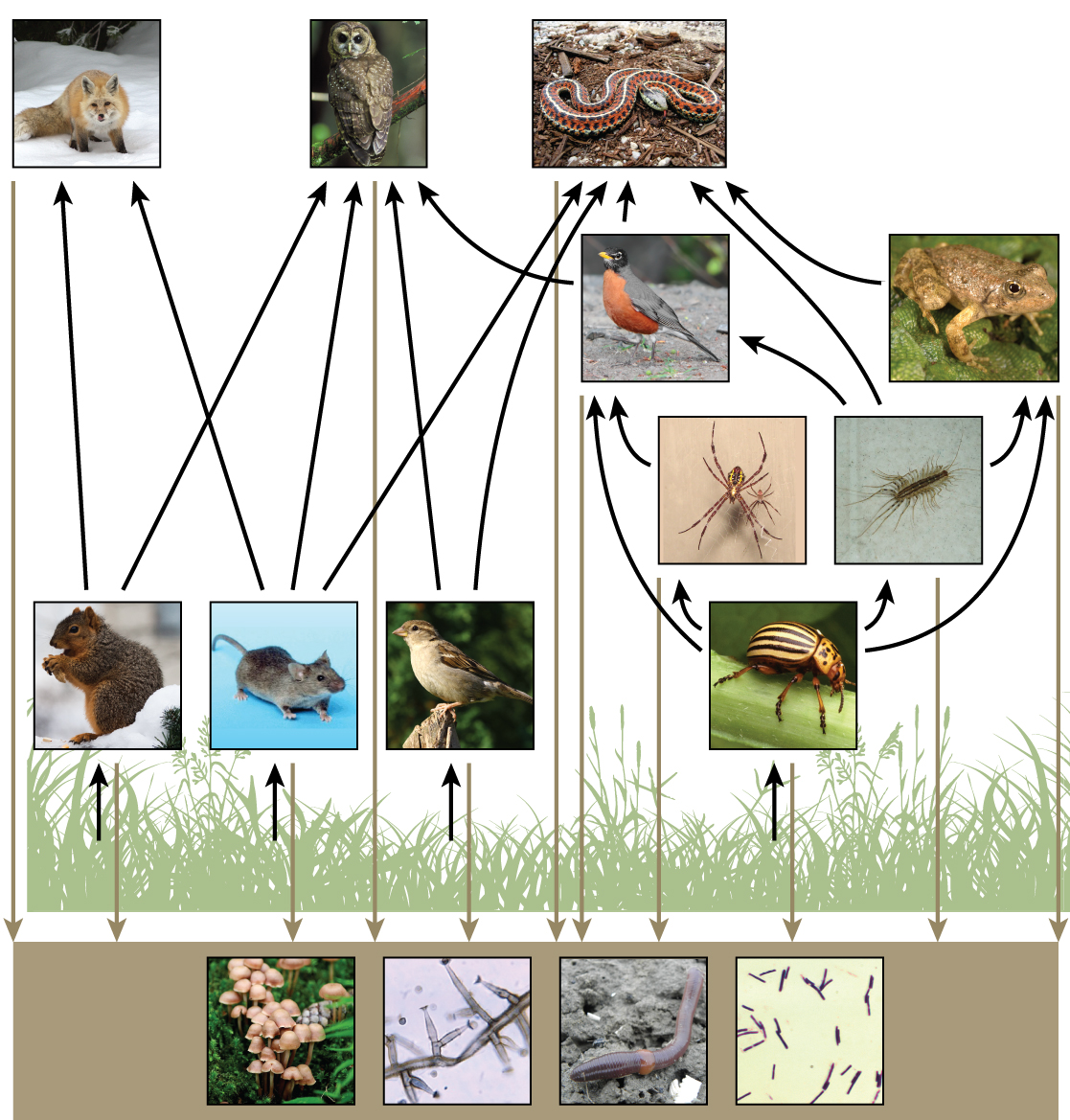| << Chapter < Page | Chapter >> Page > |

Head to this online interactive simulator to investigate food web function. In the Interactive Labs box, under Food Web , click Step 1 . Read the instructions first, and then click Step 2 for additional instructions. When you are ready to create a simulation, in the upper-right corner of the Interactive Labs box, click OPEN SIMULATOR .
Another trophic level are the decomposers, organisms that feed on decaying organic matter (dead organisms, parts of organisms and wastes). Some decomposers are called detritivores which consume organic detritus. These organisms are usually bacteria, fungi, and invertebrate animals that recycle organic material back into the biotic part of the ecosystem as they themselves are consumed by other organisms.
All living things require energy in one form or another. Energy is used by most complex metabolic pathways (usually in the form of ATP), especially those responsible for building large molecules from smaller compounds. Living organisms would not be able to assemble macromolecules (proteins, lipids, nucleic acids, and complex carbohydrates) from their monomers without a constant energy input.
Food-web diagrams illustrate how energy flows directionally through ecosystems. They can also indicate how efficiently organisms acquire energy, use it, and how much remains for use by other organisms of the food web. Energy is acquired by living things in two ways: autotrophs harness light or chemical energy and heterotrophs acquire energy through the consumption and digestion of other living or previously living organisms.
Photosynthetic and chemosynthetic organisms are autotrophs , which are organisms capable of synthesizing their own food. Photosynthetic autotrophs ( photoautotrophs ) use sunlight as an energy source, and chemosynthetic autotrophs ( chemoautotrophs ) use inorganic molecules as an energy source. Autotrophs are critical for most ecosystems: they are the producer trophic level. Without these organisms, energy would not be available to other living organisms, and life itself would not be possible.

Notification Switch
Would you like to follow the 'Environmental biology' conversation and receive update notifications?